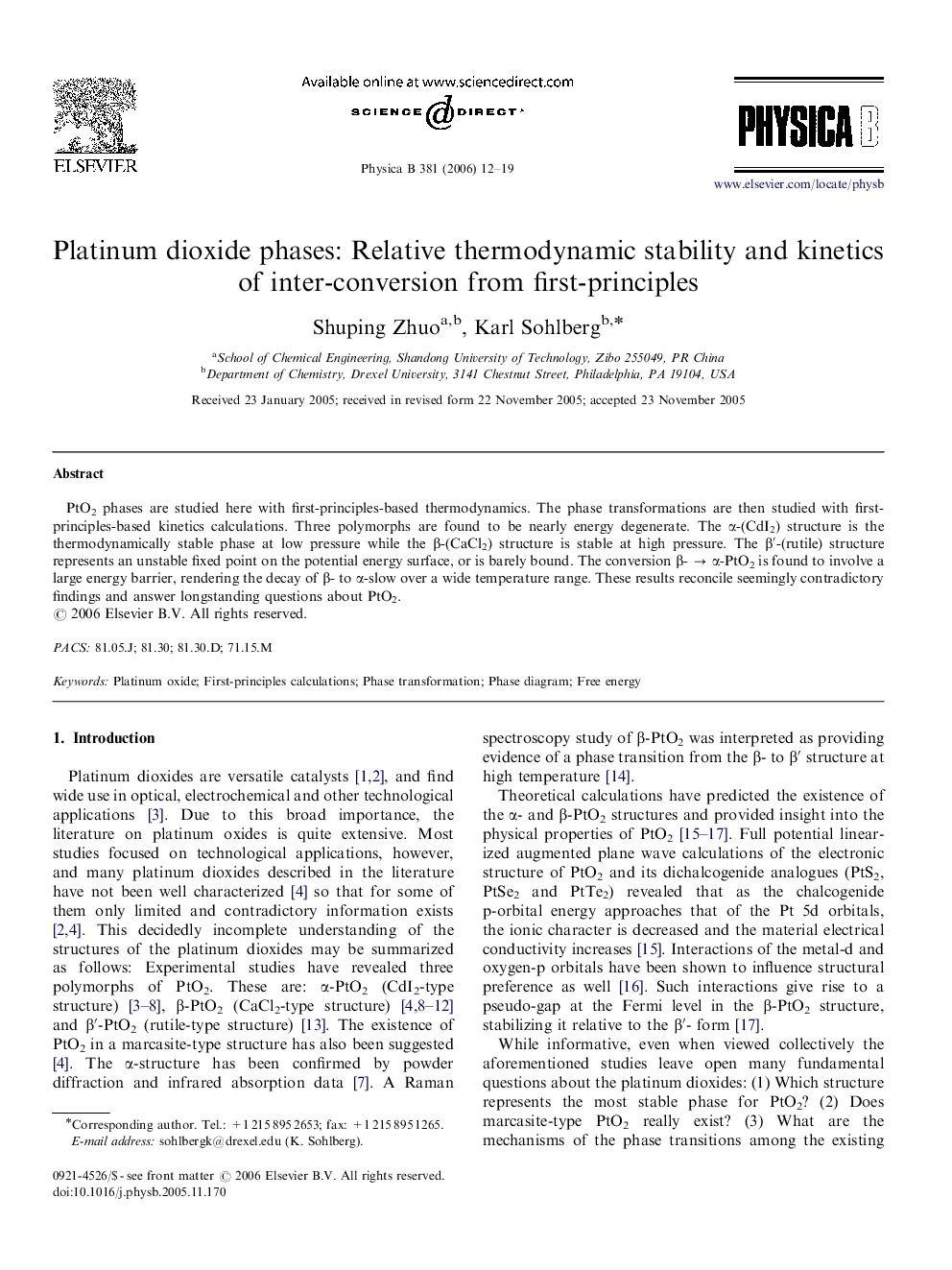| Article ID | Journal | Published Year | Pages | File Type |
|---|---|---|---|---|
| 1816842 | Physica B: Condensed Matter | 2006 | 8 Pages |
Abstract
PtO2 phases are studied here with first-principles-based thermodynamics. The phase transformations are then studied with first-principles-based kinetics calculations. Three polymorphs are found to be nearly energy degenerate. The α-(CdI2) structure is the thermodynamically stable phase at low pressure while the β-(CaCl2) structure is stable at high pressure. The β′-(rutile) structure represents an unstable fixed point on the potential energy surface, or is barely bound. The conversion β- → α-PtO2 is found to involve a large energy barrier, rendering the decay of β- to α-slow over a wide temperature range. These results reconcile seemingly contradictory findings and answer longstanding questions about PtO2.
Related Topics
Physical Sciences and Engineering
Physics and Astronomy
Condensed Matter Physics
Authors
Shuping Zhuo, Karl Sohlberg,
